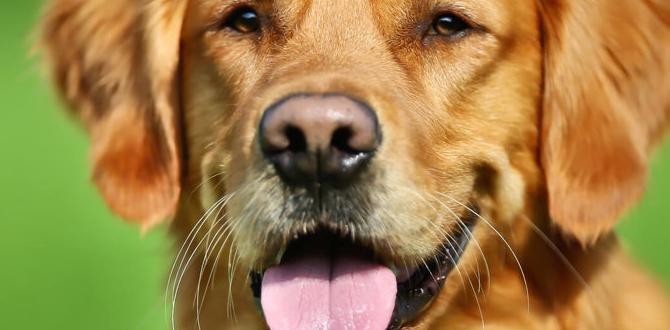Aggressive dog behavior guide: Understanding and managing your dog’s aggression can be a daunting but crucial task for any dog owner. It’s natural for dogs to exhibit a range of behaviors, and while some are perfectly normal expressions of excitement or playfulness, others can signal distress, fear, or a genuine threat. Recognizing the signs, understanding the root causes, and implementing effective management strategies are key to fostering a safe and harmonious relationship between you, your dog, and the wider community. This comprehensive guide delves into the complexities of canine aggression, offering insights and practical advice from experts in the field.
Defining Aggression in Dogs
Before we can tackle aggression, it’s important to understand what it actually is. Aggression isn’t a single diagnosis; rather, it’s a broad term encompassing a range of behaviors displayed when a dog perceives a threat or feels threatened. These behaviors can manifest as growling, snarling, snapping, lunging, or even biting. It’s vital to differentiate aggressive displays from other assertive or playful behaviors. A play bow, for instance, is a clear signal of friendly intent, while a stiff body, raised hackles, and a direct stare are often precursors to aggression. Understanding these subtle cues can help owners intervene before a situation escalates.
Common Triggers for Aggressive Dog Behavior
Several factors can contribute to a dog’s aggressive tendencies. One of the most prevalent is fear and anxiety. Dogs may react aggressively when they feel cornered, threatened, or unsure of a situation or individual. This can be particularly true for dogs with limited socialization, those who have experienced past trauma, or breeds predisposed to nervousness.
Territorial aggression is another common form, where a dog defends its perceived territory, whether it’s the home, yard, or even a favorite spot on the sofa. This aggression is often directed at strangers or unfamiliar animals approaching the dog’s “domain.”
Resource guarding is also a significant cause of aggression. Dogs may fiercely protect valuable resources like food, toys, bones, or even people. This can manifest as low growls when someone approaches their prized possession, escalating to more overt threats if the dog feels the resource is in danger.
Pain or illness can also trigger aggression. A dog that is in pain may become irritable and lash out when touched in a sensitive area or when it feels vulnerable due to its medical condition. This is why a sudden onset of aggression should always prompt a veterinary check-up to rule out any underlying health issues.
Finally, frustration and redirected aggression can occur when a dog is prevented from reaching a desired stimulus. For example, a dog barking and lunging at a squirrel through a window might redirect its frustration onto a nearby person or animal if it can’t get to the squirrel.
Types of Aggression to Watch For
Understanding different types of aggression helps in diagnosis and treatment.
Predatory Aggression: This is instinctual and directed at prey animals or fast-moving objects. It’s characterized by a stalk, chase, and pounce. While often not intentionally harmful to humans, it can be dangerous for smaller animals.
Inter-dog Aggression: This occurs between dogs and can stem from competition for resources, social status, or simply a lack of proper socialization.
Maternal Aggression: Unspayed female dogs may exhibit aggression towards anyone or anything perceived as a threat to her puppies.
Human-Directed Aggression: This is the most concerning type and can be a complex mix of fear, territoriality, pain, or a learned response. It can be aimed at strangers, familiar people, or even family members.
An Aggressive Dog Behavior Guide to Management and Prevention
Effectively managing and preventing aggressive dog behavior requires a multi-faceted approach.
1. Early Socialization and Training: The foundation of preventing aggression lies in proper socialization and positive reinforcement training from a young age. Exposing puppies to a variety of people, environments, sounds, and other animals in a positive and controlled manner helps them develop into confident, well-adjusted adults. Training using positive methods builds trust and communication between the dog and owner, making the dog more receptive to guidance.
2. Identifying Triggers and Avoiding Them: A crucial part of any aggressive dog behavior guide is learning your dog’s individual triggers. Once identified, the goal is to avoid or manage situations that provoke aggression. This might mean keeping your dog on a leash in crowded areas, not allowing them unfettered access to the front door, or closely supervising interactions with other dogs.
3. Management Strategies: When avoidance isn’t possible, management is key. This includes using tools like crates, baby gates, or separate rooms to prevent unwanted interactions, especially when visitors are present or during meal times if resource guarding is an issue. Muzzles can also be a valuable safety tool in certain situations, allowing the dog to be safely exposed to new environments or people under controlled circumstances, always with positive reinforcement.
4. Professional Help is Essential: For persistent or severe aggression, seeking professional help is non-negotiable. Certified Applied Animal Behaviorists (CAABs), veterinary behaviorists, or experienced, positive reinforcement-based dog trainers can assess the specific situation, diagnose the underlying cause of the aggression, and develop a tailored behavior modification plan. Attempting to handle serious aggression without expert guidance can be dangerous and counterproductive.
5. Never Punish Aggression: It’s a common misconception that punishing an aggressive dog will make it stop. However, punishing a dog for showing aggression (like growling) can suppress the warning signs, making the dog appear “good” until it bites without warning. Punishment can also increase fear and anxiety, exacerbating the problem. Instead, focus on understanding the cause and using positive redirection and management.
Building a Safer Environment
Dealing with aggressive dog behavior requires patience, consistency, and a commitment to understanding your dog’s needs. By focusing on early prevention, careful management, and seeking professional guidance when necessary, you can significantly improve your dog’s behavior and ensure a safer, happier life for everyone involved. Remember, a well-managed dog is a happy dog, and a responsible owner is one who prioritizes both safety and the well-being of their canine companion.
Meet Elyse Colburn, the devoted canine companion and storyteller behind the enchanting world of “Tales, Tails, and Adventures Unleashed.” A passionate dog enthusiast with a heart full of paw prints, Elyse Colburn shares heartwarming tales and insightful adventures, celebrating the joy, loyalty, and endless antics that make every dog a true hero. Join Elyse Colburn on this tail-wagging journey, where every post is a love letter to our four-legged friends.



